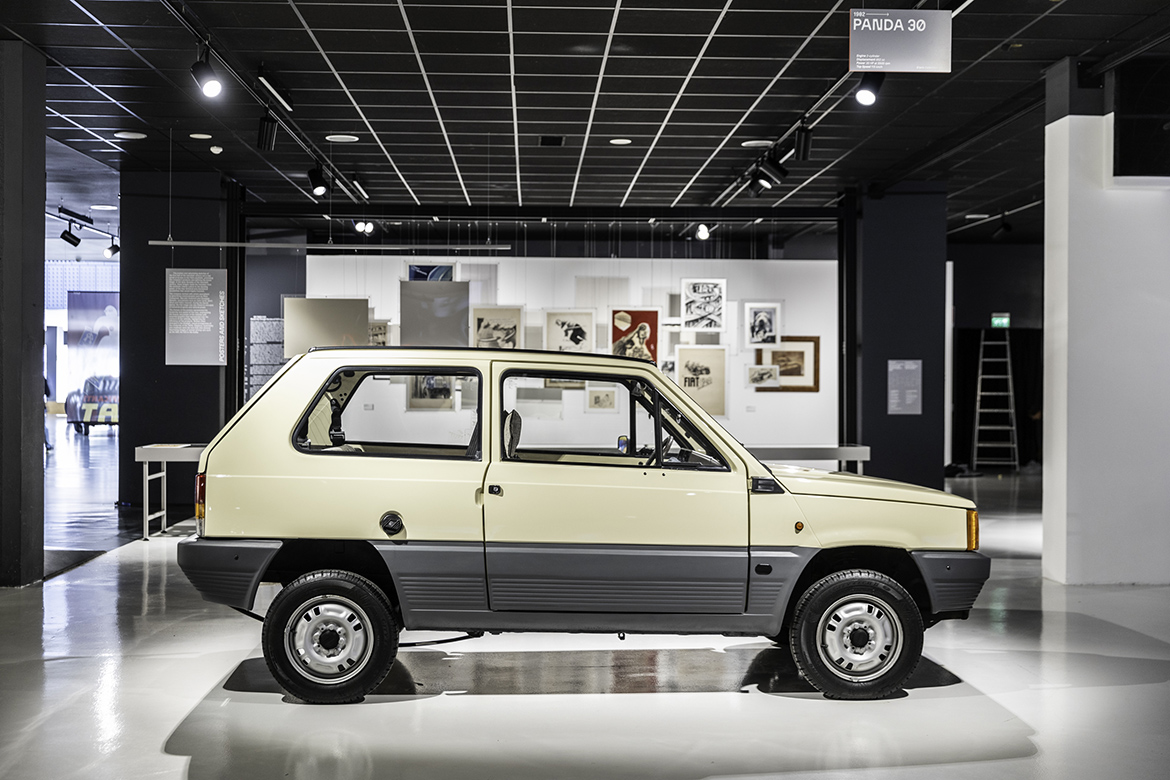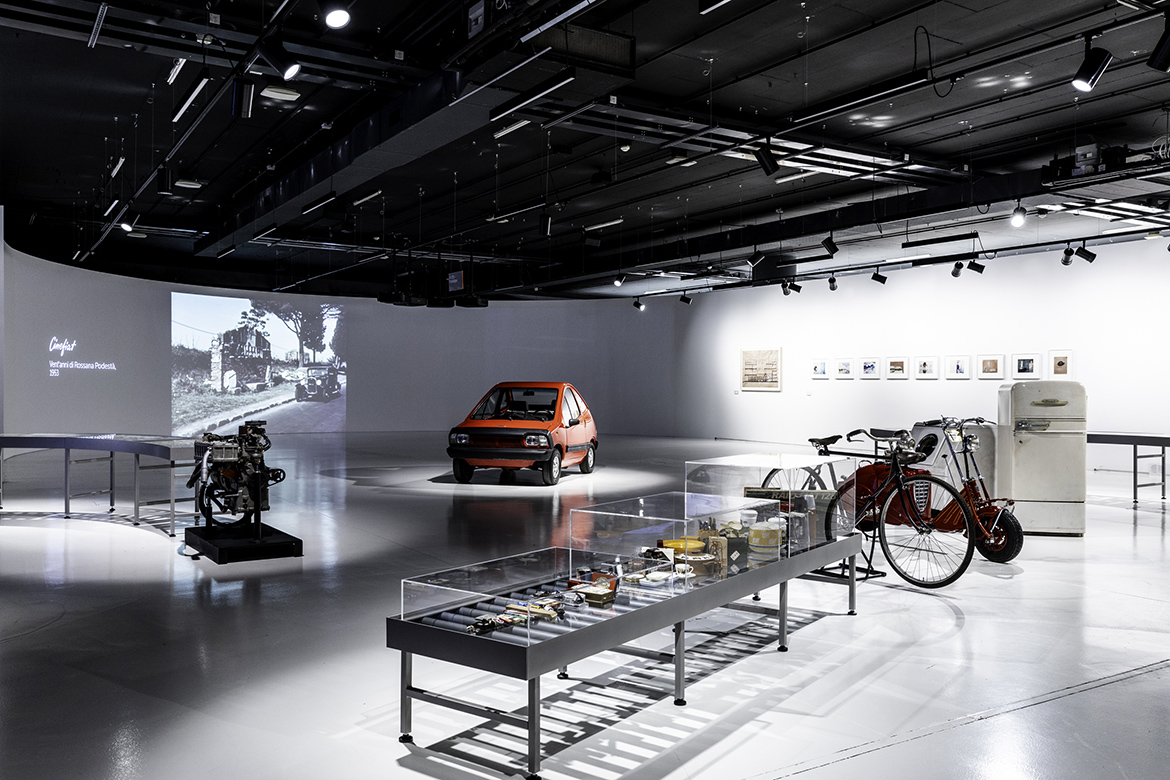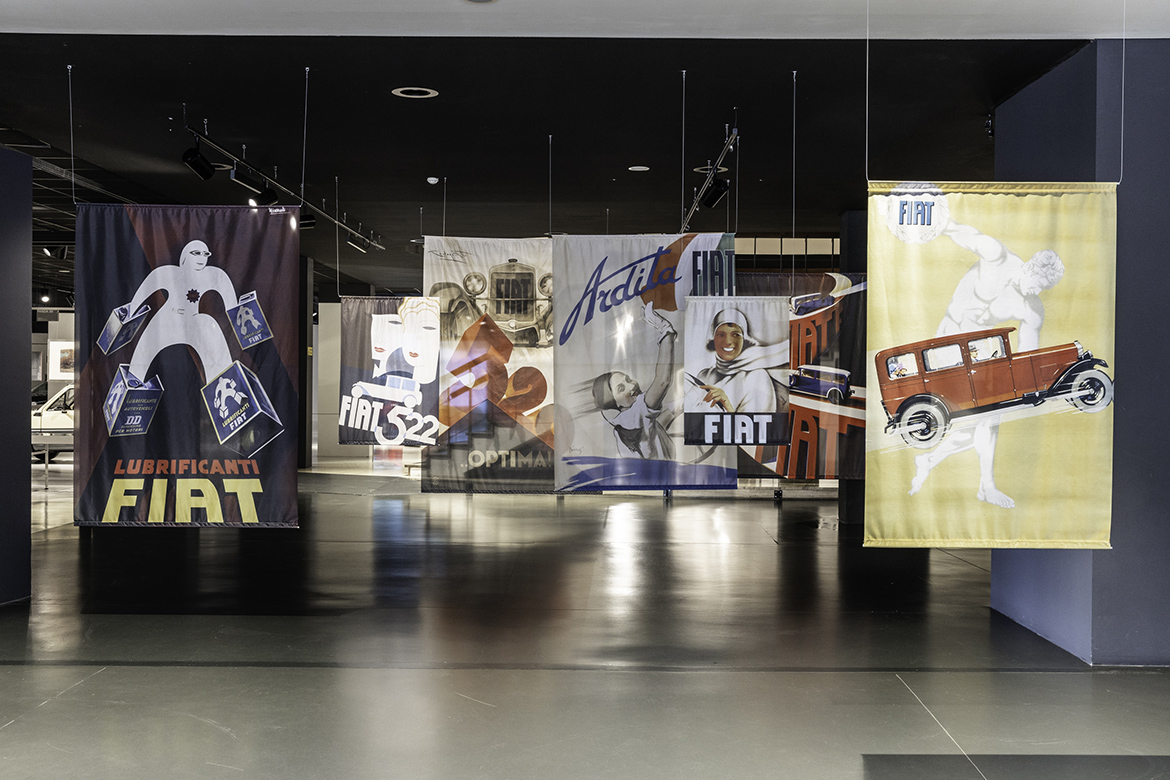To mark the 125th anniversary of the founding of Fiat, the National Automobile Museum presents the exhibition ‘125 Volte Fiat. Modernity through the Imaginary of the Brand, which traces the long and compelling history, unique in the 20th century industrial context, of the Turin car factory, offering a reinterpretation that highlights its social impact and artistic production. The exhibition project, curated by Giuliano Sergio and realised in collaboration with Centro Storico Fiat and Heritage Hub, can be visited from 15 November 2024 to 4 May 2025 in the Museum’s ground floor spaces.
Nine representative cars from the history of the famous Italian marque will be on display: the 1923 Eldridge Mefistofele, with its sleek silhouette and mighty bulk, marks one of the earliest examples of the record-breaking car; the 1932 508 Balilla, a compact and economical car that represents the transition from the production of cars for the elite to an idea of mobility for the masses; the 1936 500 A Topolino, revolutionary in design and conceived to offer an agile and agile mobility solution that would inspire generations of city cars; the 8V produced between 1952 and 1954 for an exclusive public; the 600 from 1955, characterised by a simple yet innovative architecture and designed to make the user’s life easier and more enjoyable; the 124 Abarth from 1973, a car that embodies the essence of racing cars; the X1/23 prototype from 1974, an advanced 2-seater electric concept car that anticipates the future of sustainable mobility thanks to its zero-emission propulsion and lightweight, ultra-compact design; the Panda 30 from 1982, considered, together with the 500, the Italian utility car par excellence; the 500 Riva from 2016, an exclusive jewel for lovers of luxury with a refined design. ‘Special guest’ the New 500 “La Prima” cabrio, a sustainable and highly technological reinterpretation of a timeless icon of Italian design.
The cars on display are accompanied by a vast selection of exceptional artwork, archive documents, graphic and photographic materials and audiovisuals that help define the visual imagery of the company: from the posters and advertising sketches from the turn of the century created by, among others, Leopoldo Metlicovitz and Plinio Codognato – in which the transition from Art Nouveau aesthetic culture to the dazzling power of the new technical and mechanical possibilities that would inspire futurism is realised – to the paintings by Mario Sironi, Carlo Carrà and Felice Casorati that offer an extraordinary representation of the modernity imagined by Fiat between the two wars; from drawings by Marcello Dudovich and Giuseppe Romano that bring to the fore the female figure, the protagonist of modernity in the 1920s, to a series of photographs taken by Luigi Ghirri at Palazzo Grassi in the 1990s.
And then documents – paper, audiovisual and memorabilia – enrich this story in detail, distributed in 8 exhibition macro-sections: Posters and Sketches: a veritable gateway to the FIAT imagination – the section brings together more than 50 sketches and posters produced between 1928 and 1940; Terra Mare Cielo: citing the famous advertising slogan, the section recounts how the company ventured, from the early 20th century, into production in all areas of motorised mobility, from aviation to motorboats; Welfare Fiat: the section recounts the integral model of the company’s welfare policies, which – starting after the first post-war period – accompanied its employees and workers from training schools to summer camps, from after-work clubs to sanatoriums; Design and Style: the section recounts the continuous search for functionality and economy that characterised the Fiat identity, defining the design quality of its products and the strong innovative component of its approach; Visions to the Future. Architecture, urban planning, energy: a roundup of projects that tell of the company’s commitment in various sectors, including civil engineering, electromechanics, architecture and the construction of complex plants such as refineries, power stations and industrial plants; Beyond the car a review of the most diverse Fiat-branded objects – from bicycles to mopeds, from scissors to plates, from toasters to refrigerators – testify to the company’s strategy of expanding its presence in the Italian market Cinefiat and Advertising: the section recounts the audiovisual documentation activity of the Cinefiat department, which produced not only commercials, but also films of various lengths, documentaries, animated films, musicals and newsreels and continued its activity until the 1990s.













